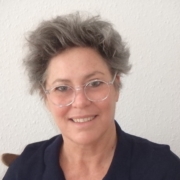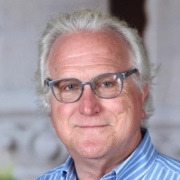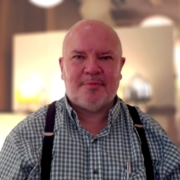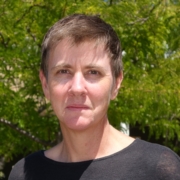Lindsay Fitzclarence
Dirty Life of Mining in Australia
Today I will continue my introduction to Australia. With me is Lindsay Fitzclarence who has just published the book The Dirty Life of Mining in Australia: A travelogue. In it, Lindsay goes on an educational journey into the history, culture, and political economy of an industry that plays an outsize role in Australia.
Lindsay Fitzclarence is an honorary professor at Deakin University. His book The Dirty Life of Mining in Australia was published last week.
Citation: Fitzclarence, Lindsay, interview with Will Brehm, FreshEd, 338, podcast audio, November 27, 2023. https://freshedpodcast.com/fitzclarence/
Will Brehm 0:00
Lindsay Fitzclarence, welcome to FreshEd.
Lindsay Fitzclarence 0:04
Thank you very much, Will.
Will Brehm 0:09
So, congratulations on your new book. I haven’t read the whole thing, but I’ve read a snippet of it and it’s really fantastic. And as a newcomer to Australia, in a sense, it’s a really great introduction to me, to the country, to the land, to the political economy. And so, I’m really happy to have you on to sort of unpack some of the big themes in this book. So, can you just give me sort of a sense of the importance of the mining industry in Australia?
Lindsay Fitzclarence 1:32
It’s a major part of the political economy in terms of bottom-line dollars. In relatively recent years, almost 300 billion in export earnings, over 200,000 jobs, over 200,000 in royalty payments to the government. So, it’s a significant component in terms of the actual physical economy of the country. But beyond that, it’s an ideological element as well. It’s got a very interesting history. Originally, a lot of people attracted because of the search for gold. And that finding of gold, which was effectively to underwrite the British economy in the 19th century, during a time with a volatility in particularly the European trading and sort of sub-economies, I suppose, of Europe, and with the American United States economy growing at a very great rate being a disrupter to the European hegemony. From there, through that early phase of this post-colonial development of Australia. But after 1901, and a federated independent country, mining became increasingly important in terms of underwriting Australia’s own growing industrial economy. So, for example, then fueling the new industries, the need for coal became very important. And it was in a number of key places. Newcastle, for example, had really very rich black coal. And you have the whole industry of Newcastle and the associated city to the south, Wollongong are examples. So, as a sort of fuel, or a critical element, of Australia’s developing industrial independence. Mining then sort of took a shift and became much more internalized and important internally in terms of the growth of the economy. And I suppose then, it became important -particularly with the growth of the iron ore sector- it became important in fueling other economies internationally. So, Australia started to develop its international trade, and the production of iron ore, or the export of iron ore, sort of fueled or added to the Australian economy externally, then as well. And that’s gone through a number of iterations. And we’re up to a stage now where lithium, as a critical mineral, has come on the scene. It has got extensive resources in lithium. I think that will be a new boom, increasingly. In the whole post or attempt to sort of deal with climate change and flooding and spewing of atmospheric damage, I suppose a chance to sort of go globally green, lithium will be a key element. But Australia has got a host of other critical minerals as well. So, we’re right on the edge of a new mining boom in my opinion.
Will Brehm 4:35
It’s quite interesting to hear that longer view of the history of mining in the country -from gold, to coal, to iron ore, to lithium and potentially some of these other minerals in the sort of the booming of as countries they transition to green economies. But at the same time, it’s also interesting to see how it’s connected to colonialism, was then sort of, as you said, internalized and was really about sort of national development, and since iron ore really been connected to sort of the global economy and sort of other countries needing the iron ore to fuel the boom. So, I guess all these different mines in Australia; who owns them? Are these nationalized mines? Or are they privately owned?
Lindsay Fitzclarence 5:14
No, they’re certainly not nationalized. The two major players in this country BHP Billiton, which has origins in a sense of Broken Hill in New South Wales, but it was actually underwritten and funded from finance out of Britain, and that is still pretty much the same. BHP was Billiton, it’s now just BHP is based essentially, in Britain. And Rio Tinto is the same. It’s the other major player, and it’s also located in Europe. I think I’m right in saying it’s based in the United Kingdom as well. They’re the two major players. And there are other sort of ones, but they’re not as powerful and BHP Billiton has mines in many different places, actually.
Will Brehm 5:57
These are big names that I think are probably common across the world. A lot of people probably invest in them, or they have operations all over the world. I think Rio Tinto is one of the most wealthy corporations in the world, isn’t it? But your focus, of course, is not necessarily just these mines as being sort of players in the Australian economy, you’re interested in these other aspects when you were looking at mining in Australia, and you sort of start this story, I guess, to say close to home. In 2014 there was a wildfire that reached a coal mine in Morwell. Victoria, which is I think, where you’re from or you’ve lived there before. Can you tell us what happened in that fire? You know, how that sort of sparked your interest in thinking about mines as a site of research?
Lindsay Fitzclarence 6:41
Okay. It was the catalyst, you’re correct. Morwell is located in an area called the Latrobe Valley. It’s a coal mining area. It’s brown coal, not the better-quality black coal -it’s brown coal. But it was very important in terms of the state of Victoria. It was the source of electric power to fuel the power stations, firstly, in a place called Geelong, and then in a town where I grew up -spent the first 17 years- in Morwell, it was the second site to develop -a brown coal mine there. And originally this industrial complex Geelong first, they were controlled by what was called the State Electricity Commission of Victoria, the SECV, A state owned instrumentality. Oh, well, now, let me say a little bit about that. So, in a way, the people who worked in those towns were public servants. They were working as members of the extended state bureaucracy, extended state workforce, but when privatization kicked in in the 2000 and teens, the government sold these instrumentalities off, and the mines and the power complexes became privatized. And the moment then they became part of the open market, open market logics kicked in. And you’ve got managers, and bureaucrats who are looking at the bottom line of making profit, and looking all of the time for cost saving approaches. What happened as part of that process was that a watering system within the mine got closed down. That’s like the older parts of the Morwell mine that had been part of a complex of water sprays to keep the mine and to keep the surface cold, I suppose less volatile and closed down, which is a bureaucratic blunder. It’s an area that has been subject to wildfires, probably forever, and certainly in colonial times there had been wildfires that have gone just raced through the whole area and lives lost, etc. And inevitably, in heating up conditions and extreme fire danger, it only takes one spark and it’s away. And that’s what happened in 2014. In sort of the volatile climate conditions, a fire started, and it became embedded within the coal face and was burning into the face burning deep, and it just couldn’t be contained in the way that surface fires could be. It was burning into the ground. And it was just pouring out toxic gases over the town.
Will Brehm 9:16
So, what happens? What do you do when a coal mine is on fire?
Lindsay Fitzclarence 9:20
Well, under those circumstances, because of the toxic fumes that we’re spewing out over the town, firstly, they moved vulnerable people out -older people and young kids. I don’t know how those -once again, the sort of bureaucratic decisions in the state then becomes involved because they’re sort of managing as an emergency management system. But this went on -it was 45 days before they could get this under control. And in that time, a lot of people had been moved away and people were becoming ill, and the longer-term effects are probably still being felt by a lot of people. There were quite a few people who couldn’t move, who didn’t have the capacity to move anywhere and there was a lot of subsequent illness as a result of that. I’d spent the first 17 years of my life living in this place. And I had totally normalized the ebbing and flowing of life in a mining community. But I was there when it was owned as a state instrumentality, not when it was privatized. So, I went back when it had been under the jurisdiction of sort of companies that were -well, ultimately the Morwell mine was taken over by a French company. So, you’ve got bureaucrats in France, who probably wouldn’t spend a great deal of time thinking about the life of the 13,000-14,000 people living in a little place on the other side of the globe. What they were concerned about, of course, is the profit-making capacity of the mine. But they were also dealing with increasing global attention to clean green energy, and the sort of vilification of sort of the burning of fossil fuels. So, you had a company that was wanting to stay seen to be viable, and being a good global corporate citizen class. So, they went through a process of deciding they were getting out of the selling or utilizing of fossil fuel and moving toward different energy support. And so, after the mine fire, they very quickly pulled the plug on the mine. And it happened really quickly. They just announced that they were closing down production.
Will Brehm 11:26
So, people just lost their jobs as well then?
Lindsay Fitzclarence 11:28
Pretty much it happened, I think over about a nine-month period, which is not very long for an industry that had been in place since 1949. What’s that over 50 years. It had a devastating effect on the people who are living there.
Will Brehm 11:42
So, there’s this environmental effect. And then there’s this sort of livelihood effect because of this company that’s forced into really reckoning with climate change and their contribution, let’s say to the climate crisis. And so, this sort of experience basically sparked in you sort of this urge to look at how mining is working across Australia and trying to understand some of these larger dynamics at play. So, where did you end up going?
Lindsay Fitzclarence 12:09
Yes. That’s correct. That’s exactly what happened. Well, actually, what I did was I thought, I’m going to take a sample of different mining communities that were mining different products, and it was one of those things that was a decision I made within about two minutes. I sat down with an atlas map, and I went, Okay, Broken Hill, that’s silver and lead and iron ore, Roxby Downs, uranium and other products as well. The Argyle diamond mine and another place, Mt. Whaleback in Western Australia was iron ore, very big iron ore producer and Kalgoorlie, a gold producing place. So, I had a sample of different outlets, I suppose of places that were invested in extracting different types of material.
Will Brehm 12:59
Different materials, different communities, different parts of the massive continent of Australia, basically.
Lindsay Fitzclarence 13:05
Originally, I was wanting to take a sample from the entire country but effectively what it ended up was to the western half. Broken Hill was in New South Wales right on the edge of a New South Wales -Victoria, South Australia. Into South Australia, Roxby Downs. There were none in the Northern Territory, but right up to the very northwest part of Western Australia to the Argyle diamond mine. And then massive iron ore production at a place called Newman, MT Whaleback in Western Australia, and then down to Kalgoorlie, once again in Western Australia. So, there was three sites in Western Australia.
Will Brehm 13:45
Wow! I mean, so it sounds like a massive journey, so to speak. I think you said something like you traveled 12,000 kilometers by car.
Lindsay Fitzclarence 13:52
Yes, I did. And that turned out to be significant. Huge spaces in between driving through those, I effectively felt by the time I got right up into the far northwest part of the continent that I was in the opposite part, its side of the continent to where I come from down in Morwell, which is the southeast part of the continent. So, I felt as if I’d gone into a different world. The Kimberley area of Western Australia really does feel like it’s another country.
Will Brehm 14:21
So, in what ways was it different from where you grew up?
Lindsay Fitzclarence 14:24
Well, climatically to begin with, and therefore the landscape is very different. But then also it’s a different culture. Like in Western Australia, the Kimberley is a long way -It’s 1,000s of kilometers- from the capital of the state, which is Perth, down on the West Coast, more toward the south. We’re talking about a 3,000-kilometer distance. It’s a very big state. And so, people right up there felt as if they lived literally in a different subculture for the want of a better term in a different culture and were administered by bureaucrats far, far away. And I certainly had a couple of discussions with people in a couple of those mining locations there was a bit of antagonism about the people in these sorts of political center of the state having control over their lives when they didn’t know very much about what was going on so far away. I didn’t have to scratch very hard to unearth that sort of deep antagonism, or maybe that’s putting it too bluntly, tension might be a better way of expressing it.
Will Brehm 15:29
Sure, sure. And within these different communities, did they have a different relationship to mining? Or was that something that was more common?
Lindsay Fitzclarence 15:38
It was different in terms of, I suppose, the role that the big companies play. And I guess I felt that most sharply at Mt. Whaleback -that’s the mine and the town is Newman. Now that was set up specifically -the town was established to support the mine. So, effectively, there wasn’t a town there. It was built as a purpose-built town. And so, miners came in, administration people came in, and, of course, there was a small indigenous population there that have been there for eons, 1,000s of years. And so, what you had is a town that was sort of pulled in different directions. The company BHP Broken Hill constantly searching for the bottom line of making profit. And so, the introduction of sort of labor-saving devices and rationalization in the workforce was one of tension. You had local authorities, housing people who look after I suppose the welfare and the sort of the running of the town concerned about suddenly empty houses as the workforce became rationalized. And then trying to attract people. And part of what I found there was the effort to make it a bit of a tourist site. And I guess I was an example of that, you know, people were attracted by the mines. And I was one of a group, we did a mining tour, and the mining tours is part of the whole tourist ethic of the place. But the other tension it took me a long time to get a handle on was that there was also pressure to bring the local indigenous population, who had a small community on the edge of the town, to bring them into the town to fill some of these empty houses. And that was resisted by the indigenous people themselves. And there was a very good reason for that; their little community was a center of a number of indigenous groups that it was a meeting place, a key meeting place and had been for a very long time. And it’s had its own sort of cultural pulse. I didn’t understand it until I was able to step away and research it and realize that there was a whole other dynamic going on. It was part of a really complex, long history of the movement of people through that area that was seemed to me to be not understood, and certainly not acknowledged and recognized by the local bureaucrats. So, you had all these different tensions there of a town being pulled in different ways by your different forces,
Will Brehm 18:09
It’s quite interesting to think about the sort of indigenous communities and their relationship to these mining companies and these mining towns, which are, as you’ve said, so important to the Australian sort of a political economy, really. So, you know, I’d like to dig a bit more into that, you know, pardon the pun about the relationships between some of these indigenous communities that you’ve probably came across while you were looking at these mines; did they feel animosity towards these mines and these companies for taking their land, exploiting their land, sometimes I would imagine Rio Tinto and BHP used some pretty terrible methods to get to the mines, like, using explosives or clear topping mountains. So, was there animosity that you saw from these indigenous communities towards the mining town, the mining community, the mine itself?
Lindsay Fitzclarence 18:59
I couldn’t say that I saw that directly because to be really blunt about this, I didn’t have, and I didn’t know how to get access to these indigenous communities. And I certainly wasn’t -well, I guess it certainly wasn’t part of my mindset when I set out originally. But by the time I’d finished this study, and leaving Calgary, the last place I studied and you know, sort of a several days drive home, I had plenty of time to think when I get back to mobile or when I get back to Victoria, I’m going to find out more about the indigenous people that existed in and around Morwell that I had never given an inkling, not a moment’s thought to. It was sort of out of sight, totally out of mind.
Will Brehm 19:46
And so, what did you learn once you started digging into it?
Lindsay Fitzclarence 19:50
In that part of the world where I was, that was forcing me to you need to come to terms with this, it was very much an active dynamic and probably most apparent in Newman -the one I was just talking about- but I had not considered that element at all up to that point. There was a work by a young person who has done a study of the indigenous populations of Gippsland, Don Watson, that was the first book I read when I was aware of the book, but I hadn’t read it. And I realized that there would be clues about what I was searching for, and it was the first book I looked at as a reference when I got back and started to reconsider the whole indigenous issue -that question that element. And it emerged, as probably for me, as the biggest insight of this study; that whole question of land ownership, land rights. The cultural chasm that exists between we colonials, people who are of the colonial heritage and the traditional owners, that is a gulf, a gap, that is still to be bridged.
Will Brehm 20:53
I would also add that it’s also the gap between the traditional owners of the land and the now global capitalist elite that own these mines. Like you were saying earlier, the people sitting in France who own this mine, they probably had absolutely no conception of the traditional owners of the land and indigenous ways of being and knowing.
Lindsay Fitzclarence 21:13
You’re right and I’m going to give you an example. And this happened subsequent to my trip. But in the Pilbara area of Western Australia, several years ago, a sacred site, an indigenous shelter was blown up in the search for a return of ore by Rio Tinto. It became an international event and an international issue, probably to the shock and horror of Rio Tinto as a company, because suddenly the insensitivity or the sort of the brutality of their mainstream practices was put on the agenda in a global sense. And for a major international corporation, incredibly bad publicity. But they were held to account. I think the CEO at the time, he resigned, and he was probably bought off. But I suspect, he would have been encouraged probably to step aside. His departure was one of the ways in which, I suppose, the company owned up and said, Okay, we’ve got it wrong, and someone’s going to pay and it’s going to be this person.
Will Brehm 22:15
I still wonder, you know, the importance of mining in Australia, as you’ve said, is just so profound and so deeply connected to the body politic and as you said, an ideology. It’s sort of this mindset, it’s part of the national identity that what makes Australia great is part of this mining culture. But by titling your book, The Dirty Life of Mining, you sort of realize that there’s all these, of course, climate problems, but there’s a lot of sorts of social and cultural problems built into the whole mining industry, one being indigenous, another being this issue of labor and some of these sorts of terrible cost cutting measures from privatization, etc. And it just makes me wonder, is mining going to just continue on in Australia? It’s had such a long history. Is this something that is just going to continue on even if we recognize how dirty a life mining has? Or do you see some sort of changes underway where the reliance on mining or the mining practices are going to change to start recognizing climate change, start recognizing the traditional owners of the land, and maybe more than that. What’s your takeaway in the end from this research?
Lindsay Fitzclarence 23:26
I think we’re on the edge of a new mining boom. And it’s to do with the search for critical minerals, lithium being the main one. And I would say that it will be significant because now the whole climate change crisis is a global issue. And the press to come on board with that is there at a sort of corporate level. And I suppose just by one example, some of the mega companies are now sort of turning your attention to the search for lithium, and securing lithium deposits as being right so to place themselves on the cutting edge of this new boom associated with clean green energy production. I can see that there is lots of potential, particularly in Western Australia. There seem to be a number of different sites in which the critical minerals are present. And there’s a sort of that scramble to secure access to those places now. So, I think we’re just looking at the next phase of the long history of mining in this country.
Will Brehm 24:28
And so, what sort of questions pop up from your study then for sort of future research, let’s say?
Lindsay Fitzclarence 24:35
Probably the tensions that certainly exist around land rights, and what happened at the Juukan Shelter with Rio Tinto is probably a marker of that. There will have to be a lot of attention paid to getting the access, securing access, and also communicating well with the traditional owners of the different areas. I do see that as one issue. Having said that, the example I’d go back to what happened in the closing down of the Morwell mine. These companies sort of with their headquarters in London, for example, BHP and Rio Tinto, there’s a big gap, a massive gap between bureaucrat sitting around boardrooms, so far away concerned about their bottom line, and how they come to understand the life and sort of dynamics of small mining communities in this country. They’re really dependent on effective communication with their local managers and people who represent -I suppose it becomes a public relations issue. And I think they’re probably something like the issue with the destruction of the shelter by Rio Tinto, which suggests to me that there probably a heck of a lot more attention paid to getting public relations correct -getting it right. And there’s certainly a lot of scope for also getting it wrong probably because of the sort of nature of -you’ve got people who are managers who are under pressure to make savings on the spot decisions that they will make. And the sort of the judgments that they make under pressure to produce a profit, it seems to me that it’s just built into the whole system of extended capitalism. And the mistakes then become part of the process of, okay, we accept that mistakes will happen, we’ll learn from them, we’ll deal with them, we’ll come up with methods for avoiding but inevitably there will be different types of mistakes. So, I think that what I would envisage will be this sort of ebbing and flowing as new searches, new types of minerals that have been mined, different vested interests come online. But we’re talking about a system that is truly global, and the inevitable gap between the global and the local, I think is set up for contradictions of different types.
Will Brehm 27:00
Well, Lindsey Fitzclarence thank you so much for joining FreshEd. Congratulations on your new book, and it was just really wonderful to talk and get more learning on my introduction into Australia.
Lindsay Fitzclarence 27:10
Thank you for the opportunity to talk, Will.
Want to help translate this show? Please contact info@freshedpodcast.com
Related Author Publications/Projects
The dirty life of mining in Australia: A travelogue
Mentioned Resources
Preventing the preventable – 2014 Hazelwood coal mine fire Report
Juukan Gorge: Key lessons on free, prior and informed consent
Recommended Resources
The gold crusades, a social history of gold rushes (1849-1929)
Australia, Mining by the numbers, 2021
Mining in Australia Market Overview (2023-2027)
Effect of the mining boom on the Australian economy
Indigenous Australia for dummies
Accumulating minerals and dispossessing Indigenous Australians
Indigenous rights, mining and the Australian state
Rio Tinto and Indigenous community agreement making in Australia
The social impacts of mining on local communities in Australia
Aboriginal people, the ‘resource curse’ and Australia’s mining boom
The regulation of natural resources law in Australia for Indigenous people
Indigenous Australians and their lands: Post-capitalist development alternatives
Power, culture and economy: Indigenous Australians and mining
The Argyle Participation Agreement
Labor in production networks: Workers and unions in mining engineering work
The social impacts of mining on local communities in Australia
Wage-cutting strategies in the mining industry: Cost to workers and communities
Transformation of the Australian mining industry and future prospects
Have any useful resources related to this show? Please send them to info@freshedpodcast.com









